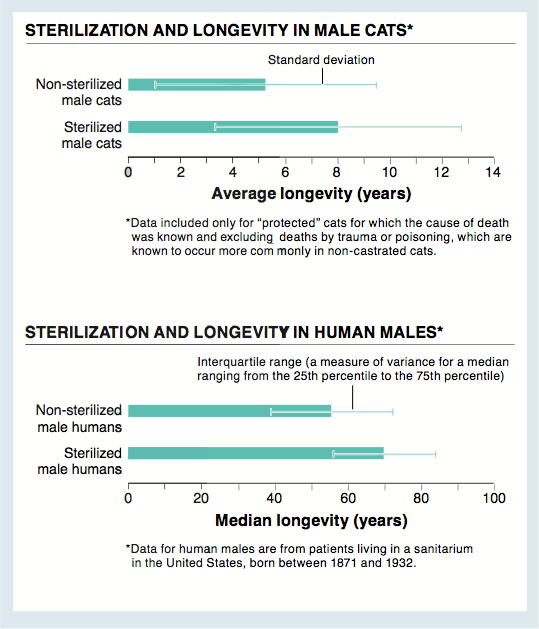
Chapter 24. Chapter 24 Graphic Content
Introduction

Instructions
Review the information provided in the graph to answer each question below.
After submitting your answer, you will be provided feedback to check if your response is correct.
(This activity contains 8 questions.)
1.

1. What is the “take-home message” of these graphs? What additional data would be helpful? Why?
2.

2. What are the scales used in the graphs? How would the graphs be perceived differently if the cat graph ranged from 0 to 100 years and the human graph ranged from 50 to 70 years? Would that be a misleading presentation? Why?
3.

3. What is the percentage longevity increase resulting from sterilization in cats? What is it in humans?
4.

4. In non-technical terms, what does “standard deviation” mean?
5.

5. For populations with the same average value for a trait, what is the difference between having a large and a small standard deviation?
6.

6. In the lower graph, longevity is measured as median longevity. What does this mean? How does it differ from average longevity?
7.

7. What does the 25th percentile mean? What does 75th percentile mean?
8.

8. Suggest why the data for the lower graph were collected from sanitarium patients.
Activity results are being submitted...